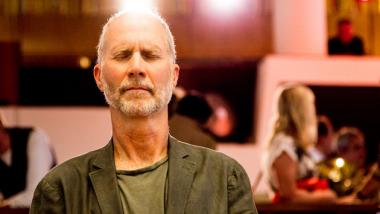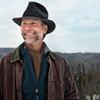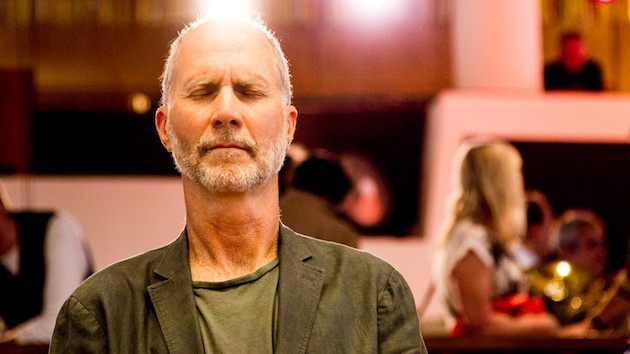
In a feature preceding the San Francisco Symphony’s performance of John Luther Adams’s The Light That Fills the World a couple of years back, SFCV contributor Brett Campbell stated that, “No composer has been more successful at using sound and music not just to portray place in a sonic way, like a realist painter or photographer, but also to make listeners feel the emotion of being there.” Adams, who has spent the largest part of his career in Alaska and now has homes also in Mexico and New York City, will be here for a full week at the end of this month, for the John Luther Adams Festival. It’s hosted by SFJAZZ and will be presented at that organization’s Miner Auditorium, as well as at Grace Cathedral and at Lands End, above the ocean in the Golden Gate National Recreation Area.
“I’m convinced that this is the biggest such series of events devoted exclusively to my music that’s ever happened,” says the 64-year-old Adams, who started in music as a rock ’n’ roll drummer and percussionist at age 12 and went on to study at the California Institute of the Arts, graduating in 1973. He came to Alaska as an environmental activist, then moved there and began to express in musical form his affection for nature and for the culture of Inuit and Athabascan native peoples.
Adams performed as timpanist and percussionist with the Fairbanks Symphony Orchestra and the Arctic Chamber Orchestra, as well as in a progressive jazz trio, before focusing completely on composition, counting Lou Harrison among his major musical mentors. In 2014 and 2015, he won a Pulitzer and a Grammy (Best Contemporary Classical Composition) for Become Ocean, recorded by the Seattle Symphony, but this month’s festival will showcase his nonorchestral writing, for soloists and ensembles of various sizes, and his enchanting use of electronics. Following is a distillation of SFCV’s long and far-ranging conversation with Adams, who was in Santiago, Chile.
What are you doing down there?
My wife Cynthia and I have been here for the last two months, holed up in the desert, working on a large — [chuckles] even for John Luther Adams, this is large — new piece, for Lincoln Center. It’s called In the Name of the Earth, and it will premiere outdoors, in Central Park, in August of 2018, with upwards of one thousand singers involved. I’ll be spending most of the next year working on it. I’ve recently been returning to the human voice. My latest CD is a concert-length work, Canticles for the Holy Winds, which I composed for a fabulous group, The Crossing, the new music choir based in Philadelphia, just released by Cantaloupe Music. Of course, “in the name,” or “in nomine,” is a conscious reference to Christian liturgy. But in the place of the Father, the Son, and the Holy Ghost, I want to invoke the Earth, the Waters, and the Holy Winds.
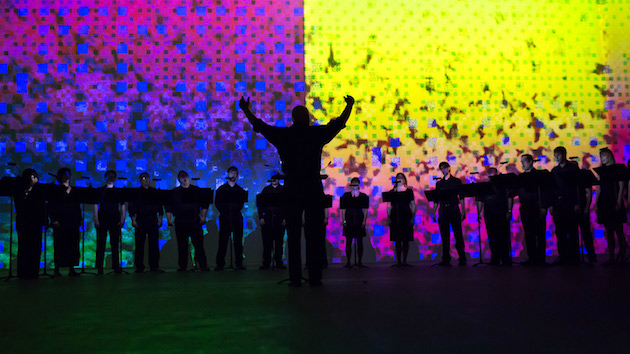
I’d like to know about your own religious background. I also want you to tell us about the Native American and Inuit elements that inspire your music and the titles of some of your pieces, including two that we’ll hear in this festival. My older brother, Tony, taught in an Alaskan community college for many years, and over time his left-wing ideology seemed to have been informed by native spirituality.
That’s a great question, and not the usual. I was confirmed in the Episcopal Church and sang in the church choir, but I’ve never been a practicing Christian. My politics have always been way to the left, but I’ve never been red, I’ve always been green. My path is similar to your brother’s, in that I feel a deep resonance with what I understand of native lifeways and belief systems, from spending most of my life in Alaska. I’ve learned from the people there that everything is sacred and everything is quotidian, and we need to float back and forth between those two modes of being present in the world.
You’ve tried to help make that happen.
Absolutely, whether it’s taking music out of the concert hall and into the big world, or in my own experience. Like with a piece like Ilimaq [the Inuit term for a spiritual journey], for solo drummer and electronics, that’s being performed on the last night of the festival [at the Miner Auditorium, on July 30]. It’s inspired by Inuit traditions of the shaman’s drum. Yes, it’s a musical instrument, but it’s also a vehicle for traveling between this world and the spirit world, which is present with us all the time.
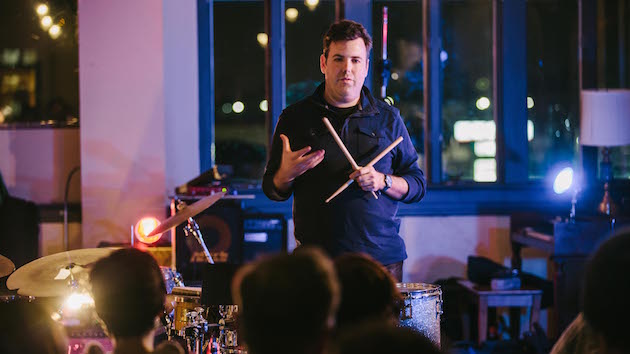
Will the solo drummer, Doug Perkins, be acquainted with these traditions?
Doug's one of the foremost proponents of my music. He's been the ringmaster of more performances of Inuksuit than anyone else on the planet. [The title is the Inuit term for a landmark; the free-admission Lands End performance takes place on July 29.] But hopefully the music conveys all of that on its own terms. Because, frankly, if it doesn’t, then all the blather, all the verbiage, ultimately mean nothing.
Please tell us something about your creative process.
Each work involves different tools and processes. I use whatever tool is important, including computers: notation software, audio software. But in recent years, for a variety of reasons, I’ve made a concerted effort to return as much as possible to pencil and paper, and I’m very particular: I use a pencil that is no longer made, friends have been buying them up, whenever they can, at exorbitant prices, and I use custom-made 11-inch by 17-inch manuscript paper in landscape format. But even before I get to pencil and paper, I try to hold a piece in my mind’s ear as long as I possibly can. It enforces a kind of discipline on my imagination, and keeps me from just manipulating things.
In your recorded pieces, I’m finding colors and tones. I wonder if you’re inherently synesthetic.
You know, Jeff, I think we all are. I don’t have that kind of Messiaen or Scriabin synesthesia, but my friend David Abram, the philosopher, says that our senses want to be whole, in the presence of any strong stimulation or excitement. There’s a kind of vacuum, in our bodies, in our minds, in our spirits, perhaps, that needs to be filled. That’s the way in which I’m synesthetic.
Maybe you can get us there better than when we’re stuck in a concert hall chair riding yet another symphonic warhorse.
I hope it’s not a heavy-handed mission, but it’s something I want for myself. Our lives, our culture, our world, the human world, has become dangerously, potentially fatally fragmented, and we’ve got to put things back together. And we damn well better do it in a hurry, because Antarctica is coming apart now. I hope it can happen in a gorgeous space like the SFJAZZ Center, it’s a more promising environment in which to experience this. But it’s also part of the reason why I’ve moved outside, so that in experiencing Inuksuit at Lands End, people from San Francisco, or from the other side of the Bay, may experience a place they know well in a new way. And I’m thrilled about installing [the electronic soundscape] Veils and Vesper, one of my favorite pieces, in Grace Cathedral [on July 29], where you might see colors you haven’t seen before, or not in a while.
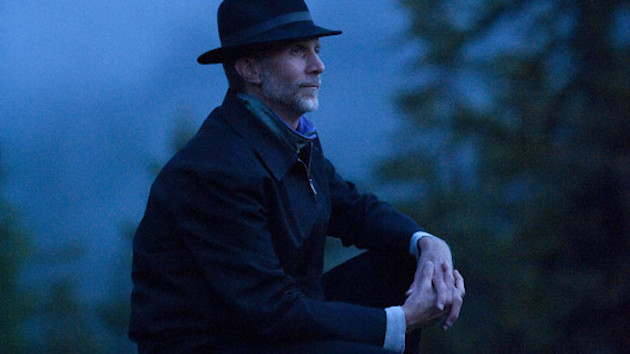
How did this festival come to be?
Randall Kline, the godfather of SFJAZZ, is a force of nature, and he approached me; he was politely persistent. It would be fine in a classical music venue, but I particularly like that it’s happening outside the classical music ghetto, if you will. Because this is where the audience for this new music is, particularly with younger people who don’t care whether something is classified as classical or jazz or anything else. All these listeners care about is hearing something that moves them, something that touches them, maybe something they haven’t heard before. [Kline and Adams will host a Listening Party at the Miner Auditorium, to open the festival on July 26.]
Will you be functioning anything like a conductor?
No. I used to perform my own music regularly, I had a series of ensembles, but it’s not my job. I’ll come to San Francisco a couple of days early, visit all the sites, and begin to fine-tune how we’ll present each of the pieces in each of the spaces. Then I’ll be in rehearsals with the JACK Quartet, and Doug Perkins, and with the ensemble for Inuksuit. Once I've acted as a sort of landscape architect for designing the overall shape of the performances, I’ll be working with the audio technicians as a sort of sound designer. My music is all about sound and also all about space, not just musical, poetic, or metaphorical space, but physical, acoustic, volumetric space.
It looks like Inuksuit will involve the largest ensemble, if not also the biggest audience.
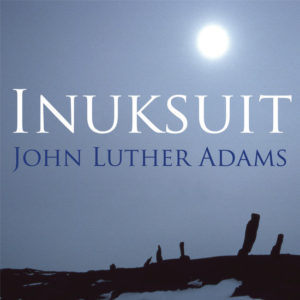
It can be performed with anywhere from 9 to 99 musicians, in multiples of three, because there are three different families of instruments — metal, drums, and air, in a way corresponding to earth, water, and wind — and you have to have an equal number. I know Doug started recruiting some time ago, and I think we’re shooting for somewhere around 66. But it’s not a loosey-goosey hippy-dippy happening, it’s a serious musical composition and performance. Though it is open-ended in its form, and flexible in its scale.
What about the role of the listeners/audience? Will they be free to wander around the Sutro Baths?
I try to leave it completely undetermined. What I want for you is what I want for myself, which is an invitation to enter into a place, into a world that may be ravishingly beautiful, may be a little bit scary, some combination of the two, and to have the freedom to take your own journey. Find a spot and root yourself, or move the whole time and just follow your ears. I’m hoping to give you the opportunity to experience more fully your own presence, your own place in the world. And if it’s not putting too grandiose a point on it, I’d say that’s a kind of model of how I imagine human society might be. If we lived in a society in which we all felt more deeply embedded and responsible and empowered, I think problems like global warming and income inequality and injustice would be dealt with more immediately.
Which should also involve deep listening, to each other.
Which is a very, very hard thing to do.
Will your pieces make special demands on the Miner Auditorium?
I think so, including lighting demands. Take the world premiere of the new string quartet, Everything That Rises [July 28]. It’s really four simultaneous solos, and the musicians [the JACK Quartet] will be deployed around the house, around the audience, in four different directions on four different levels. The same will be true for Ilimaq, the big percussion work with electronics. We’ll do that as surround sound.
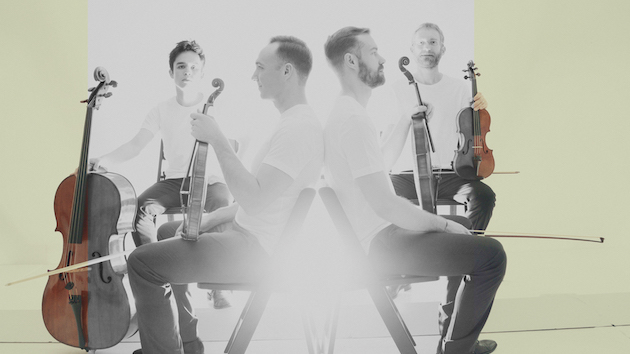
How has it been to have a chamber ensemble like JACK in your stable?
A number of my large ensemble works included a string quartet, but I’d never imagined I’d write a string quartet [per se]. Then, while I was teaching at Harvard for a semester, I heard the JACK Quartet, and I instantly understood how I might make the medium my own. The result was The Wind in High Places [composed in 2011, to be performed by the JACK on July 27], which is a 20-minute piece composed in natural harmonics on open strings. A couple of years later, a second quartet followed, Untouched [also on the July 27 program], a further exploration of that Aeolian sound world. That was written for Brooklyn Rider with JACK in mind, and JACK is recording it this weekend. The third quartet was Canticles of the Sky, and they finally got to touch the fingerboards. Now comes Everything That Rises, where they play stopped tones, but it’s also in [just intonation] tuning. It’s the harmonic series superimposed on itself, going up the spiral, and as you get higher and higher, the intervals get smaller and smaller, so they get more dissonant; but of course they’re acoustically perfect dissonances, so they don’t have that edgy growl. The JACK is recording it this weekend in Banff, but San Francisco is getting the premiere performance.
I assume that after the prep work, you’ll be free to be out there among the rest of us listeners.
I’m excited about meeting the listeners, particularly those who may be regulars at SFJAZZ but maybe haven’t heard that much of this kind of music, whatever we call it now.
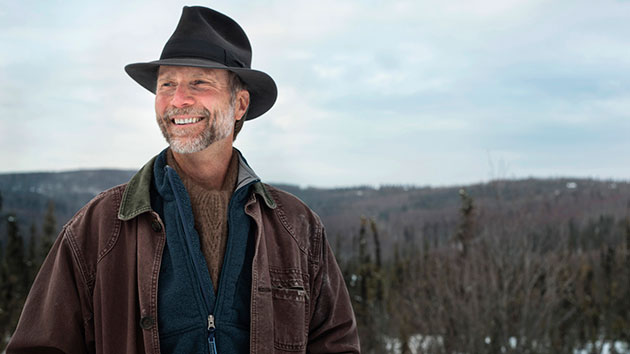
After the spacious inspirations of Alaska and Mexico, have you found inspirational soundscapes in New York?
I’m not a city boy. Cynthia and I have a lovely little one-bedroom apartment in the liveliest corner of what the real estate developers are trying to call SOHA, which is South Harlem. There’s a certain kind of work I can do in New York, but I can’t do the deep, slow, foundation work, so we’ve been spending as much time as we can in undisclosed remote locations, so I can get some serious work done. But last year I did a little piece that is my one and only New York City piece. It was a commission from the Metropolitan Museum, which took over the old Whitney Museum building when the Whitney moved downtown. They asked me to make a little sound log, composed from recordings that were “crowd-sourced” in the streets between the two buildings. It’s called Soundwalk 9:09. It's the timing of the walk between the buildings, and there's an uptown version and a downtown version.
And the Beatles version which preceded it, “One After 909."
“Move over once, move over twice.”
I see you’ve held on to your rock cred. What’s in the offing, aside from that Central Park piece?
Next March, in Seattle, Ludovic Morlot and the Seattle Symphony will give the world premiere performance of Become Desert, which completes the trilogy that began with Become River and Become Ocean. This will be a huge piece, the same length as Become Ocean but with five separate ensembles, including choir. And they’re bringing it to Cal Performances in April.
Will Cynthia be here with you for your festival? Does she have a part in your creations, aside from as wife and mother?
I wouldn’t go anywhere without her, and oh my goodness, she does indeed! She is very much my muse, my foil, my best friend, my compatriot from the environmental crusade; we have shared so much in our lives together. And fortunately, she’s not in music at all. [Cynthia Adams is the founder and CEO of GrantStation, which helps nonprofits secure funding. The Adams’s son, Sage, is GrantStation’s lead programmer.] Cynthia is completely adventurous and irreverent. She’s become a kind of collaborator, not in an obvious way but that we’re having these experiences in wild country, sharing our solitude. She’s a fantastic observer, because she is smart, and incredibly patient. She brings to being present in a place that quality of intense attention that I want to bring to my work as composer, and that I hope to inspire for you, as a listener to the music.

